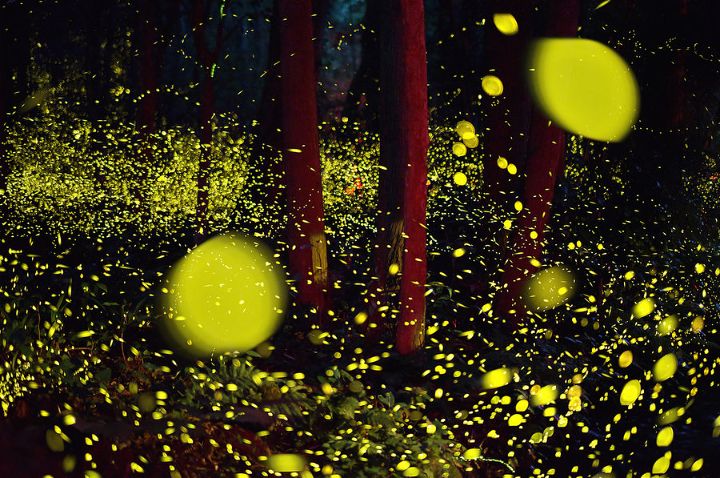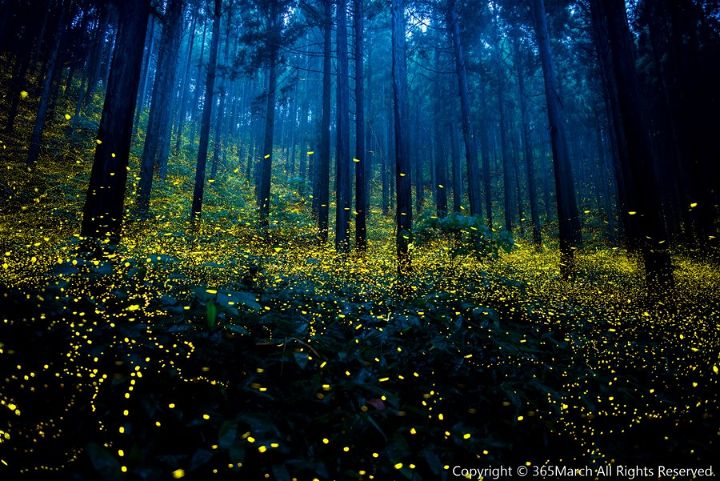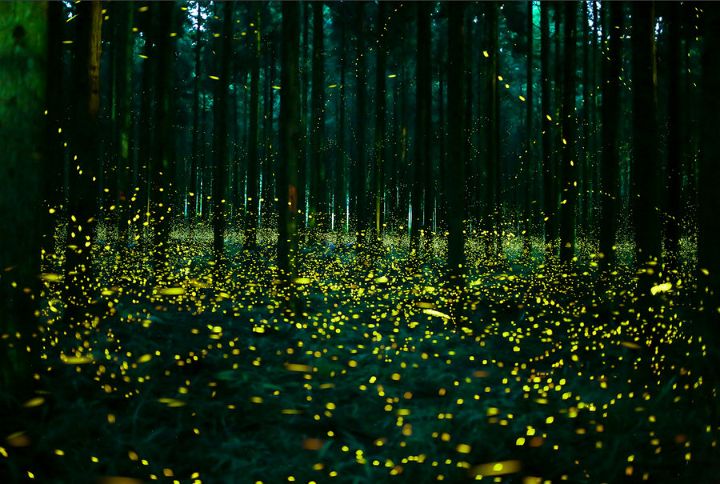Typically known for lighting the night skies with their glowing bodies, the magical sight of fireflies congregating together is one chased by people all around the world. But it is also a sight that is becoming more and more difficult to find.
The decline of firefly species has been a difficult topic to tackle since there is no way to truly pin down the extent of the threat but the reports of dwindling populations have been impossible to ignore. With over 2,000 species of fireflies at risk, a study led by Sara Lewis – professor of biology at Tufts University – and recently published in the journal Bioscience illustrated the threats to extinction that fireflies are now facing.

hm777 / photohito.com
(Researchers: Climate change might result in platypus extinction)
Lewis’ study cited surveys revealing significant declines in different species specific to Malaysia and England as evidence of the urgency. Anecdotal reports and expert opinions which paint a picture of reductions in occurrence and abundance of several firefly species over the decades add to that.
While it may be relatively simple to observe the decline in firefly populations, it’s not as easy to determine the cause behind it. Lewis’ study aims to fill that gap by determining “the most prominent perceived threats to firefly population and species persistence.”
After surveying the Fireflyers International Network – a scientific organization composed of individuals with interests and expertise in firefly ecology, behavior, taxonomy, or conservation – the researchers were able to conclude that habitat loss, light pollution, and pesticide use were considered to be the most serious threats.
Habitat loss ranked as the highest threat to fireflies, possibly due to how unlikely it is for these species to be rescued by migration. Various factors such as flightless females and limited larval movement make relocation an unsuitable alternative. Often, the cause behind habitat loss is attributed to human development: urbanization, industrialization, and agricultural intensification.
Europe’s focus on agricultural intensification has wiped out or fragmented areas that have always been natural habitats for fireflies. Japan’s urban development and rural out-migration have resulted in environments that are no longer able to support biodiversity as it once did. The trend of clearing mangroves for oil palm plantations, shrimp farms, or flood mitigation in Southeast Asia have made areas unsuitable for the growth and development of certain firefly species.

Yu Hashimoto / 365m.blog.jp
(The Philippine Tamaraw is Critically Endangered—This Docu-Film Shows Why You Should Care)
Light pollution, specifically artificial light at night (ALAN), ranked second as a threat. This includes both direct lighting affecting a localized area as well as skyglow. Skyglow refers to “a more diffuse illumination that can exceed full-moon levels and can spread light far beyond urban centers.” They estimate that 23% of the global land surface is now exposed to at least some degree of artificial night sky brightness.
The threat that ALAN poses to firefly species is predominantly directed at nocturnally active firefly taxa utilizing bioluminescent courtship signals. This means that firefly species who use long-lasting glows or flashing signals to attract mates are unable to gain enough attention when their environments are too bright for their ‘light’ to be seen. Eventually, this leads to lower reproduction for species living in areas that are more exposed to ALAN.
Pesticide use was named the third highest risk of firefly extinction. Broad-spectrum insecticides are generally considered to be detrimental towards nontarget insects and taxa as it can contaminate areas it did not intend to. Insecticide concentrations in water and soil are particularly harmful to fireflies. This is because their larval stage lives commonly occur underwater or in soil.
In Japan and Southeast Asia, pesticide contamination of rivers has severely impacted its viability to support life. The United States has such a lax attitude towards pesticides that it is commonly used in both agricultural and residential settings, directly and indirectly affecting the survival of fireflies.

Miyu / photohito.com
(DENR is Reminding Everyone Not to Hurt the Endangered Hornbills at Taal Volcano)
Other threats to firefly populations include water pollution, tourism, overharvest, invasive species, and climate change.
Lewis and her team make some recommendations which may aid in conserving our firefly species. Establishing sanctuaries and identifying protected areas would aid in preserving suitable habitats. Controlling light pollution by minimizing ALAN around key areas ought to make bioluminescent courtship signals more effective. Reducing the use of pesticides and insecticides should be intuitive. Lastly, developing guidelines for sustainable tourism would protect the species and habitats alike from human destruction.
What do you think about this?
Do you have a story for the WhenInManila.com Team? Email us at story.wheninmanila@gmail.com or send us a direct message at WhenInManila.com Facebook Page. Interact with the team and join the WhenInManila.com Community at WIM Squad!




